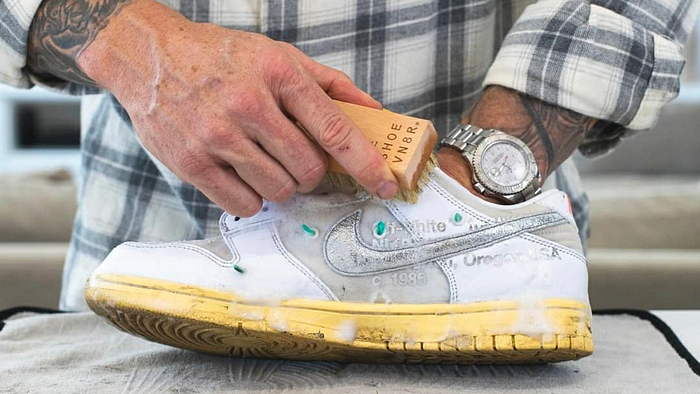Sneakers are more than just footwear; they are a part of modern lifestyle and fashion. But daily use exposes them to dirt, stains, and unpleasant odors. While home cleaning can help, it often fails to restore sneakers to their original condition. In such cases, trusting the best sneakers cleaner becomes the smart choice for protecting style, comfort, and durability.

Why Professional Sneaker Cleaning Matters
Sneakers often suffer from stubborn stains, sweat buildup, and dust that ordinary washing cannot remove. In the middle of this challenge, choosing the best sneakers cleaner ensures your shoes remain spotless and fresh without damage. Experts use safe cleaning products and specialized techniques to restore their shine while preserving fabric quality and sole strength.
Kleanex: Reliable Sneaker Care
Among trusted providers, Kleanex has built a reputation for high-quality sneaker and shoe care. In the middle of their specialized service, the best sneakers cleaner techniques include eco-friendly methods, modern tools, and careful handling for every pair. With doorstep pickup and delivery, Kleanex makes sneaker cleaning effortless and reliable, keeping your footwear ready for every occasion.
Benefits of Choosing the Best Sneakers Cleaner
Professional sneaker cleaning offers more than just visible results. It helps extend shoe life, eliminates odor-causing bacteria, and restores brightness to worn-out pairs. In addition, the best sneakers cleaner service prevents discoloration and cracking, ensuring sneakers remain comfortable and stylish. Many providers also offer related solutions like leather shoe cleaner, making them a one-stop option for complete footwear care.
Maintaining Sneakers Between Cleanings
Even with professional help, sneakers need regular attention at home. Gentle brushing, quick stain removal, and storing them in dry spaces can reduce wear and tear. In the middle of these practices, scheduling sessions with the best sneakers cleaner ensures deep care that household methods cannot achieve, giving shoes the perfect balance of freshness and longevity.
Conclusion
Investing in the best sneakers cleaner guarantees that your favorite pairs always look sharp, smell fresh, and feel comfortable. With professional services like those offered by Kleanex, sneaker care becomes simple, eco-friendly, and effective. Combining expert cleaning with routine maintenance ensures sneakers last longer and continue to complement your lifestyle with every step you take.




